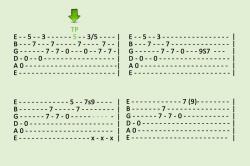What are good exercises for vocal placement?
Mastering vocal placement is key to unlocking a powerful, resonant, and healthy singing voice. It's less about where you physically put your voice and more about the sensation of sound resonating freely within your vocal tract, particularly in your facial "mask" area. This sensation is a result of well-coordinated fundamental techniques.
Understanding Vocal Placement
Vocal placement refers to the feeling of sympathetic vibrations and amplified sound in specific areas of your head and face, especially the mask (around the nose, cheeks, and forehead). When you achieve proper placement, your voice feels effortless, vibrant, and carries well, preventing strain and enhancing your tone. Poor placement, often felt as a tight, "throaty" sound, can lead to vocal fatigue and damage.
Foundational Pillars for Optimal Placement
Before diving into specific exercises, establish these core pillars:
Breath Support: Your voice's engine. Use deep, diaphragmatic breathing where your abdomen expands on inhalation. Exhale with controlled, steady pressure, preventing your chest from collapsing too quickly. This consistent air stream is crucial for sustaining sound without pushing from the throat.
Posture: The framework for your instrument. Stand tall with a relaxed, aligned spine, shoulders down, and chest slightly lifted. This open alignment allows the vocal tract to function efficiently and freely.
Relaxation: The key to an open channel. Release tension in your jaw, tongue, and throat. A common sign of tension is a jutting jaw or a pulled-back tongue. Practice keeping your larynx (voice box) in a low, neutral, and relaxed position.
Essential Exercises for Enhancing Vocal Placement
These exercises help you cultivate the sensations of free resonance and coordinated vocal production.
1. Resonance-Focused Exercises
These are designed to help you feel vibrations in your mask.
Humming (M, N, NG sounds):
How to: Start with a gentle hum on a comfortable pitch, focusing on feeling the buzzing sensation around your lips and nose. Sustain the hum, then gradually open into a pure vowel like "ah" or "ee," trying to maintain that forward buzzing feeling. Experiment with different pitches, gliding smoothly through your range.
Benefits: Directly teaches mask and nasal resonance. It helps decompress the vocal folds and encourages a forward, free-sounding tone.
"NG" to Vowel:
How to: Make an "NG" sound (like the end of "sing") and hold it, feeling the vibration strongly in your nasal passages and mask. While sustaining the "NG," slowly open your mouth into a vowel (e.g., "NG-AH," "NG-EE," "NG-OH") without losing the forward sensation.
Benefits: Excellent for transitioning from pure nasal resonance to open vowel sounds while keeping the voice "forward" and vibrant.
"Hand Trap" (Resonance Check):
How to: Make an "NG" sound, feeling the vibrations. Gently cup your hands over your nose and then behind your head. Notice if the vibrations increase, indicating good bone conduction and forward placement. You should feel sympathetic vibrations in your skull.
Benefits: Provides immediate tactile feedback for mask resonance and helps internalize the feeling of sound traveling through the head.
2. Vowel Modification & Equalization Exercises
These help shape your vocal tract for consistent tone across your range.
Vowel Blending/Equalization:
How to: Sing a simple scale or arpeggio on "ee-oo-ee-oo" or "ah-oh-ah-oh." The goal is to make all vowels feel like they're originating from the same resonant space, without tension. For bright vowels like "ee," think of directing the sound slightly downwards or "backwards" to prevent stridency. For dark vowels like "oo," think of bringing the sound "forward" into the mask.
Benefits: Creates a consistent tonal quality across all vowels, eliminating "flips" or changes in placement as you sing different sounds. Promotes balanced use of vocal tract space.
"Lips Over Tongue" for Vowels:
How to: As you sing vowels, focus on forming the vowel primarily with your lips, keeping your tongue relaxed and relatively flat in your mouth. This prevents the tongue from tensing and pulling back, which can block resonance.
Benefits: Reduces tongue and jaw tension, opening the throat and allowing resonance to flow freely into the mask.
3. Register Blending (Mixed Voice) Exercises
These bridge the gaps between your chest voice and head voice for seamless transitions.
Lip Trills (Lip Bubbles):
How to: Gently vibrate your lips together while exhaling air, creating a bubbling sound. Sustain this on a comfortable pitch, then glide smoothly up and down your range, through your passaggios (transition areas). Keep the feeling light and effortless.
Benefits: Helps to balance subglottic pressure, reduces laryngeal tension, and encourages a smooth connection between chest and head voice without breaks or flips. It allows vocal folds to vibrate freely.
Siren/Glide on "OO" or "EE":
How to: Start on a low pitch with a pure "OO" or "EE" vowel, and slowly glide upwards through your entire comfortable range, then back down. Maintain a consistent vowel shape and focus on the sensation of the sound effortlessly shifting from chest resonance to head resonance.
Benefits: Develops a seamless transition between registers, smoothing out breaks and building vocal agility. Encourages a consistent vocal tract shape across the range.
Integrating Exercises into Your Routine
For best results, incorporate placement exercises throughout your vocal practice:
Warm-up: Start with gentle humming, lip trills, and yawn-sighs to relax and activate resonance.
Technique Focus: Dedicate a significant portion of your practice to resonance, vowel, and blending exercises. Focus on the sensations of freedom and vibration.
Song Application: As you practice songs, consciously apply the sensations learned in exercises. If a phrase feels tight, revert to a hum or a lip trill on that phrase to find the effortless resonance.
Cool-down: Finish with gentle humming or soft, descending sirens to relax the voice.
Common Pitfalls and How to Avoid Them
Throaty/Shouting Sound: Often caused by pushing too much air or muscular tension. Focus on lighter, more relaxed sounds and excellent breath support to prevent pushing from the throat.
Excessive Nasality: While nasal resonance is good, too much can sound pinched. Ensure you're opening into pure vowels from nasal sounds, not just staying nasal.
Jaw/Tongue Tension: A common killer of resonance. Practice jaw release exercises (gentle massage, "chewing" motions) and ensure your tongue stays flat and relaxed (using "ng" or "yawn" exercises helps).
Forcing Placement: Remember, placement is a sensation that results from good technique, not something you physically force. Focus on breath, relaxation, and open vowels, and the placement will follow naturally.
Expert Advice
Many vocal pedagogues emphasize that true vocal placement is a result, not a cause, of correct singing technique. Instead of trying to "put" the voice somewhere, focus on the fundamental elements: relaxed phonation, efficient breath management, open vocal tract (relaxed jaw, soft tongue, lifted soft palate), and clear vowel formation. When these elements are in balance, your voice will naturally find its optimal resonance and placement.
Different singing styles (e.g., classical vs. contemporary) may emphasize slightly different vocal tract shapes for varied timbres, but the underlying principles of breath support, relaxation, and efficient resonance remain universal.
By diligently practicing these exercises and understanding the foundational principles, you'll not only enhance your vocal placement but also develop a more effortless, expressive, and resilient singing voice.
What vocal exercises aid in improving vocal placement and resonance?
Exercises for Improving Vocal Placement and Resonance
Improving vocal placement and resonance is all about finding the feeling of sound vibrating freely in your facial "mask" area. This sensation comes from a combination of good breath support, relaxed posture, and an open vocal tract. Here are key exercises that help you cultivate this feeling:
1. Resonance-Focused Exercises
These exercises are designed to help you actively feel and direct vibrations into your mask (nose, cheeks, and forehead).
Humming (M, N, NG sounds):
How to: Start by gently humming on a comfortable pitch. Focus on feeling a buzzing sensation around your lips and nose. Sustain this hum, then slowly open your mouth into a pure vowel (like "ah" or "ee"), trying to maintain that forward buzzing feeling. Glide through different pitches, keeping the sound resonant.
Why it helps: Humming directly teaches you to feel mask and nasal resonance. It encourages your vocal folds to vibrate freely without tension and directs the sound forward, giving you a vibrant, free-sounding tone.
"NG" to Vowel Transition:
How to: Begin with a sustained "NG" sound (like the end of "sing"), feeling the strong vibration in your nasal passages and mask. While holding the "NG," gradually open your mouth into a vowel (e.g., "NG-AH," "NG-EE," "NG-OH") without losing that initial forward sensation.
Why it helps: This exercise is excellent for training your voice to transition from pure nasal resonance to open vowel sounds while keeping the voice forward and vibrant, preventing it from falling back into the throat.
"Hand Trap" (Resonance Check):
How to: Make an "NG" sound and feel the vibrations. Gently cup your hands over your nose, then move them behind your head. Notice if the vibrations you feel intensify. This indicates good bone conduction and forward placement.
Why it helps: This provides immediate tactile feedback for mask resonance, helping you internalize the sensation of sound traveling through the bones of your head.
2. Vowel Modification and Equalization Exercises
These exercises help you maintain a consistent vocal quality and placement across different vowel sounds and pitches.
Vowel Blending/Equalization:
How to: Sing a simple scale or arpeggio using alternating vowels like "ee-oo-ee-oo" or "ah-oh-ah-oh." The goal is to make each vowel feel like it's resonating from the same consistent space, without any shifts or tension. If a vowel feels too bright ("ee"), try to think of directing the sound slightly downwards or "backwards." If a vowel feels too dark ("oo"), focus on bringing the sound more "forward" into your mask.
Why it helps: This creates a consistent tonal quality across all your vowels, eliminating abrupt changes in placement as you sing. It promotes a balanced use of your entire vocal tract space.
"Lips Over Tongue" for Vowels:
How to: As you sing, consciously form vowels primarily with your lips, ensuring your tongue remains relaxed and relatively flat in your mouth.
Why it helps: This technique actively reduces tension in your tongue and jaw, which often block resonance. By relaxing the tongue, you open up the throat, allowing sound to flow freely into your facial resonators.
3. Register Blending (Mixed Voice) Exercises
These help smooth out the transitions between your chest voice (lower notes) and head voice (higher notes), ensuring consistent placement.
Lip Trills (Lip Bubbles):
How to: Gently vibrate your lips together while exhaling air, creating a bubbling sound. Start on a comfortable pitch and smoothly glide up and down through your entire vocal range, especially through your passaggios (transition areas). Keep the feeling light and airy.
Why it helps: Lip trills help balance the air pressure below your vocal folds, reduce tension in the larynx, and encourage a seamless connection between your chest and head voice, preventing breaks or flips.
Siren/Glide on "OO" or "EE":
How to: Begin on a low pitch with a pure "OO" or "EE" vowel, and slowly slide your voice upwards through your comfortable range, then back down. Focus on maintaining a consistent vowel shape and the sensation of the sound effortlessly shifting from chest resonance to head resonance.
Why it helps: This exercise specifically develops a smooth transition between your vocal registers, eliminating breaks and building overall vocal agility while maintaining consistent placement.
Remember, consistent practice and focusing on the sensations these exercises create are crucial for truly improving your vocal placement and achieving a more vibrant, effortless, and healthy singing voice.













